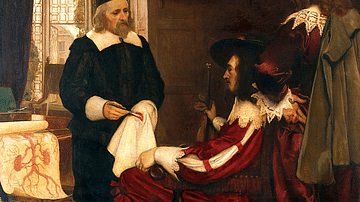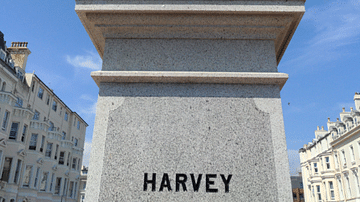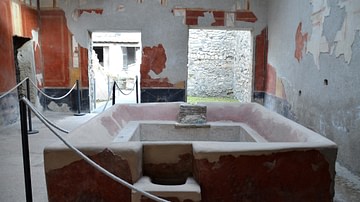Search
Search Results

Article
William Harvey's Discovery of Blood Circulation
The human body's system of blood circulation was discovered by the English physician and anatomist William Harvey (1578-1657) in 1628. Harvey determined the relationship between the blood system of arteries and veins and the regular contractions...

Article
Ten Juneteenth Myths
The celebration of Juneteenth – originally known as "Freedom Day" – began on 1 January 1866 in Texas and, since then, a number of myths have grown up around the event it commemorates: the issuance of General Order No. 3 in Galveston Texas...

Video
Debunking the Myth of the Lost Cause: A Lie Embedded in American History - Karen L. Cox
Examine the myth of the Lost Cause: a campaign created by pro-Confederates after the Civil War to promote the lie that they seceded for state's rights. In the 1860’s, 11 southern states withdrew from the United States and formed the Confederacy...

Image
Statue of William Harvey, Folkestone
A statue of the English physician William Harvey (1578-1657) who discovered the circulatory system in 1628. Folkestone, England, where Harvey was born.

Video
What Really Happened to the Library of Alexandria? - Elizabeth Cox
View full lesson: https://ed.ted.com/lessons/what-really-happened-to-the-library-of-alexandria-elizabeth-cox 2,300 years ago, the rulers of Alexandria set out to fulfill a very audacious goal: to collect all the knowledge in the world...

Video
A Day in the Life of an Ancient Egyptian Doctor - Elizabeth Cox
It’s another sweltering morning in Memphis, Egypt. As the sunlight brightens the Nile, Peseshet checks her supplies. Honey, garlic, cumin, acacia leaves, cedar oil — she’s well stocked with the essentials she needs to treat her patients...

Image
William Harvey & Charles I
A painting showing William Harvey (1578-1657) demonstrating to King Charles I of England (r. 1625-1649) his theory of the circulatory system.

Image
Portrait of William Harvey
A c. 1627 portrait of the English physician William Harvey (1578-1657) who discovered the circulatory system in 1628. (National Portrait Gallery, London)

Article
The Fullers of Ancient Rome
The fullers of ancient Rome were launderers who washed the clothes of the city and also finished processing fabric later made into clothing, blankets, or other necessary items. They were looked down upon for their use of human and animal...

Article
Female Gladiators In Ancient Rome
Female gladiators in ancient Rome – referred to by modern-day scholars as gladiatrix – may have been uncommon but they did exist. Evidence suggests that a number of women participated in the public games of Rome even though this practice...